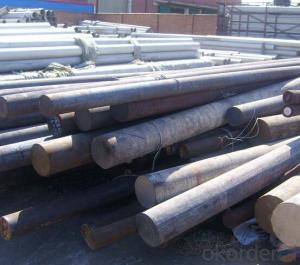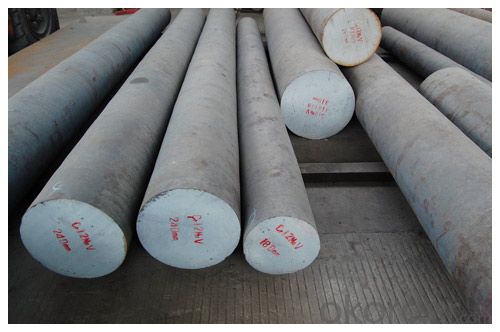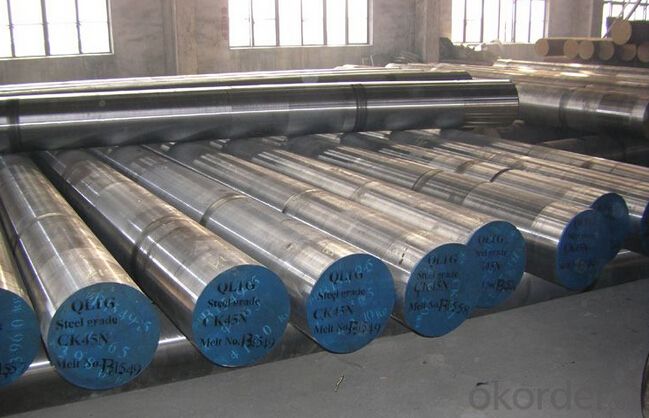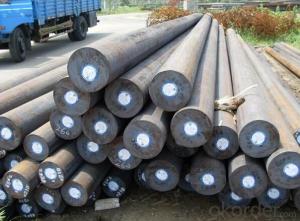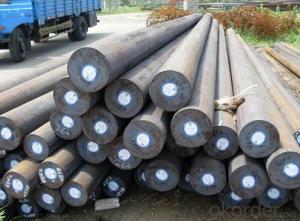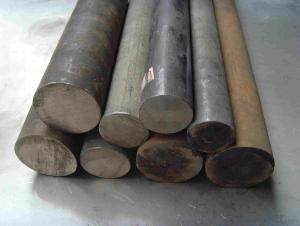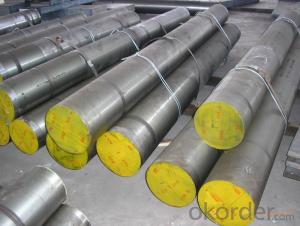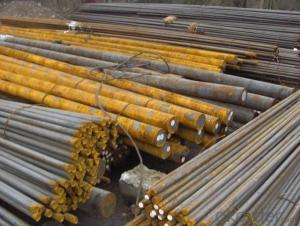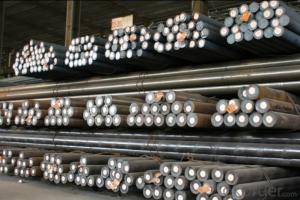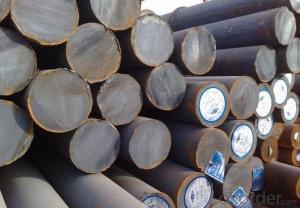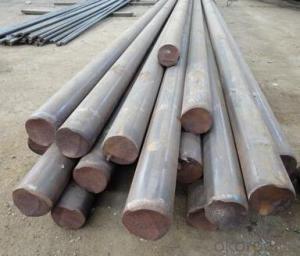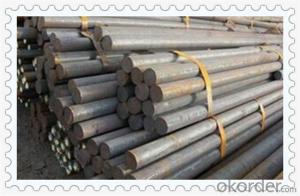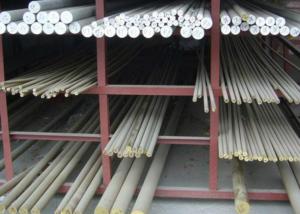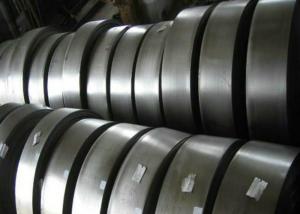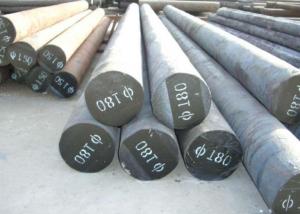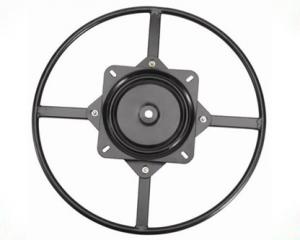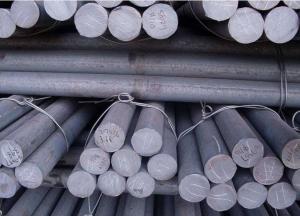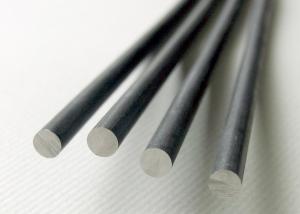ASTM DIN JIS Standard 1020 1045 Carbon Steel
- Loading Port:
- China main port
- Payment Terms:
- TT OR LC
- Min Order Qty:
- 30 m.t.
- Supply Capability:
- 10000 m.t./month
OKorder Service Pledge
OKorder Financial Service
You Might Also Like
Specification
ASTM DIN JIS Standard 1020 1045 Carbon Steel
Product Information:
Material:High Quality Carbon Structural Steel 1020
Size:Diameter:10-700mm
Length:6000mm-12000mm
Origin place :Made In China
Delivery Condition:Hot rolled, cold drawn, forged
Surface require:Black, grinding, bright, polish
Heat treatment:Quenched, Tempered, annealed
Packing:Seaworthy packing ,wooden case ,carton,woven bag or at client's requires
Delivery time:According to order’s quantity.
Trade Term:EXW,FOB,CIF
Payments:T/T or L/C at sight
Port:China main Port, such as shanghai, Dalian, Shenzhen port.
MOQ:30Metric Ton
Product Overviews:
| Product Name | Typical Grades | Diameter(mm) | Standard adopted |
| Carbon Steel | 20 (1020/S20C/C22) | Ø16-Ø300 | GB/SAE/JIS/DIN |
| 40 (1040/S40C/C40) | |||
| 45 (1045/S45C/C45) | |||
| Bearing Steel | GCr9 (51100/SUJ1) | Ø12-Ø250 | |
| GCr15 (52100/SUJ2/100Gr6) | |||
| GCr9SiMn (A485-Gr.1/SUJ3) | |||
| Cr-Mo Steel | 20Cr (5120/SCr420H/20Cr4) | Ø12-Ø250 | |
| 40Cr (5140/SCr440/41Cr4) | |||
| 42CrMo(4140/SCM440/42CrMo4) | |||
| Gear Steel | 20CrNiMo | Ø16-Ø600 | |
| 20CrMn(5115/SMnC420/20MnCr5) | |||
| 20CrNiMo(8620/SNCM220/20CrMiMo2) |
Product Show:
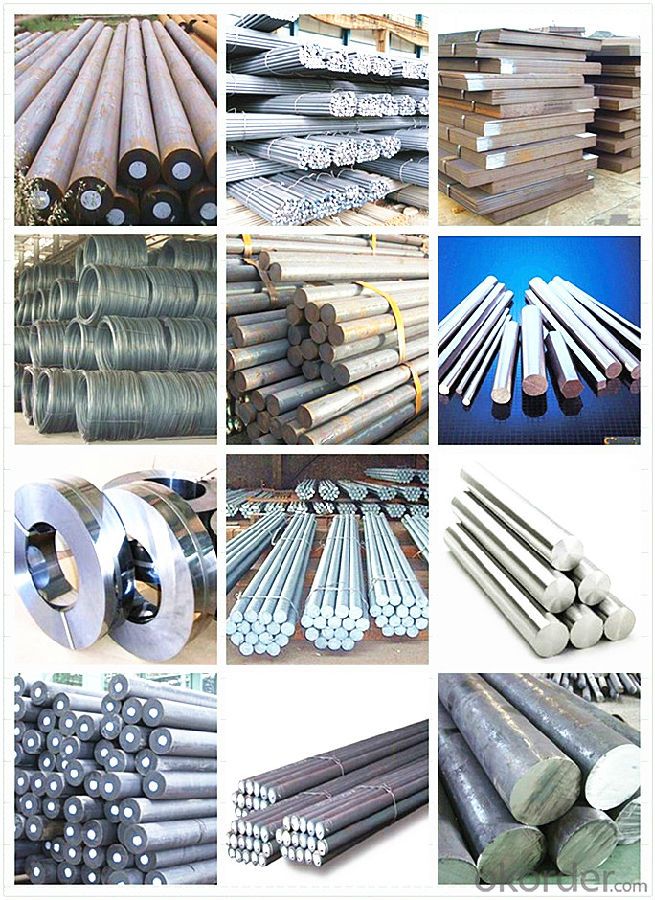
Our Advantages:
· Industry experience over 20 years.
· Shipment of goods -More than 70 countries worldwide.
· The most convenient transport and prompt delivery.
· Competitive price with best service.
· High technical production line with top quality products.
· High reputation based on best quality products.
With our experienced, enthusiastic and dynamic staffs, we assure to bring you the products with best quality, reasonable prices and good after-sales services under the motto: Friends First, Business After.
Communication, Experience, Expertise and Best efforts are our Promises to you.
- Q: How is case-hardening steel used in the production of gears and shafts?
- Case-hardening steel is used in the production of gears and shafts to enhance their surface hardness and wear resistance. By subjecting the steel to a specialized heat treatment process, such as carburizing, the outer layer of the metal becomes hardened, while the core remains tough and durable. This case-hardening process ensures that the gears and shafts can withstand the high stresses and loads they experience during operation, resulting in improved performance and longevity.
- Q: What are the main advantages of using special steel in the marine industry?
- The main advantages of using special steel in the marine industry include its high strength and corrosion resistance, which are crucial for withstanding the harsh marine environment. Special steel also offers excellent weldability and formability, enabling the construction of complex structures and components. Additionally, its durability and long service life contribute to reduced maintenance and replacement costs.
- Q: How does high-speed steel perform in high-temperature cutting operations?
- High-speed steel performs exceptionally well in high-temperature cutting operations. It has excellent heat resistance, retaining its hardness and strength even at elevated temperatures. This makes it highly effective in applications that involve high cutting speeds and temperatures, ensuring prolonged tool life and improved cutting performance.
- Q: What are the main advantages of using special steel in the construction industry?
- The main advantages of using special steel in the construction industry are its high strength and durability, which allows for the construction of structures that can withstand heavy loads and harsh environmental conditions. Special steel also offers excellent resistance to corrosion, making it suitable for use in coastal or industrial areas. Additionally, special steel is highly versatile and can be easily fabricated and shaped, providing flexibility in design and construction.
- Q: What are the different methods of improving the corrosion resistance of special steel?
- Improving the corrosion resistance of special steel can be accomplished through several available methods. Some commonly utilized techniques include: 1. Alloying: Enhancing corrosion resistance can be effectively achieved by alloying the steel with specific elements. For instance, the addition of chromium forms a protective chromium oxide layer on the surface, acting as a barrier against corrosion. Other elements such as molybdenum, nickel, and copper can also be incorporated to enhance corrosion resistance. 2. Surface treatments: Various surface treatments can be employed to augment the steel's corrosion resistance. Galvanizing, for example, involves coating the steel with a layer of zinc, providing protection against corrosion. Another method, electroplating, deposits a thin layer of a more corrosion-resistant metal like nickel or chromium onto the steel surface. 3. Passivation: Passivation is a chemical process that eliminates free iron and other contaminants from the steel surface, resulting in the creation of a passive film that aids in corrosion resistance. This method is frequently used for stainless steel, in which a thin layer of chromium oxide is formed by treating the steel with an oxidizing agent such as nitric acid. 4. Protective coatings: The application of protective coatings on the steel surface significantly enhances its corrosion resistance. Various types of coatings, such as paints, epoxy coatings, and ceramic coatings, act as a barrier between the steel and the corrosive environment, preventing direct contact and corrosion. 5. Heat treatment: Heat treatment techniques, including annealing, quenching, and tempering, can alter the steel's microstructure, thereby enhancing its corrosion resistance. Heat treatment improves the steel's mechanical properties, reduces residual stresses, and eliminates impurities, all of which contribute to better corrosion resistance. 6. Design considerations: Proper design and construction techniques play a crucial role in improving the corrosion resistance of special steel. For instance, the elimination of sharp corners and crevices, the use of appropriate drainage systems, and ensuring proper ventilation can prevent the accumulation of moisture and corrosive agents. It is important to note that the selection of the most suitable method depends on the specific application, environment, and desired level of corrosion resistance. Optimal results can often be achieved by employing a combination of these methods.
- Q: How does special steel perform in chemical processing applications?
- Special steel is highly desirable in chemical processing applications due to its excellent corrosion resistance, high temperature resistance, and strength. These properties allow it to withstand harsh chemical environments and maintain its structural integrity, ensuring safe and efficient operation. Additionally, special steel can exhibit exceptional resistance to pitting, crevice corrosion, and stress corrosion cracking, making it an ideal choice for various chemical processing equipment such as reactors, storage tanks, and pipelines.
- Q: What are the different welding methods used for special steel?
- There exists a range of welding methods that can be utilized for special steel, contingent upon the specific needs of the project. Some of the commonly employed welding methods for special steel comprise the following: 1. Gas Metal Arc Welding (GMAW): Also known as MIG welding, this technique employs a consumable electrode and a shielding gas to safeguard the weld against atmospheric contamination. GMAW is advantageous for welding special steel due to its ability to produce high-quality welds with minimal spatter. 2. Gas Tungsten Arc Welding (GTAW): Also known as TIG welding, this method employs a non-consumable tungsten electrode and a shielding gas to protect the weld. GTAW is frequently employed for special steel as it allows for precise control during the welding process, resulting in defect-free, high-quality welds. 3. Shielded Metal Arc Welding (SMAW): Also known as stick welding, this technique utilizes a consumable electrode coated in flux to shield the weld. SMAW is widely employed for special steel due to its versatility and portability, making it suitable for various positions and environments. 4. Flux-cored Arc Welding (FCAW): This method employs a tubular electrode filled with flux to safeguard the weld. FCAW is often utilized for special steel due to its ability to achieve high deposition rates and deep penetration, making it suitable for thicker materials. 5. Submerged Arc Welding (SAW): This technique employs a continuously fed wire electrode and a granular flux applied around the weld. SAW is commonly used for special steel as it can produce high-quality welds in thick sections. It is crucial to consider various factors, such as the type and thickness of the steel, the desired weld quality, and the specific application requirements, when selecting the appropriate welding method for special steel. Therefore, it is advisable to consult with welding professionals or engineers to determine the most suitable method for a particular project involving special steel.
- Q: What are the limitations of using special steel in high-temperature applications?
- The utilization of special steel in high-temperature scenarios comes with its own set of constraints. One notable limitation is the potential for thermal expansion. Similar to other materials, special steel expands when subjected to high temperatures. This expansion can result in changes in dimensions and internal stress, which can impact the overall performance and integrity of the structure. Another constraint is the likelihood of oxidation and corrosion. Elevated temperatures can expedite the oxidation process, leading to the formation of oxides on the steel's surface. These oxides can cause corrosion and weaken the material over time. To counteract this drawback, special steel alloys with enhanced resistance to oxidation and corrosion are frequently employed in high-temperature applications. Additionally, special steel may experience a decrease in strength at higher temperatures. The mechanical properties of the material, such as tensile strength and hardness, can be significantly diminished as the temperature rises. This reduction in strength can compromise the structural integrity of the component, making it more susceptible to failure. Lastly, special steel may possess a limited temperature range within which its desired properties can be maintained. Beyond a certain temperature threshold, the material may undergo phase transformations or experience degradation, resulting in a loss of its intended characteristics. It is crucial to carefully assess the operating temperature and select the appropriate special steel alloy with a suitable temperature range for the specific high-temperature application. In conclusion, while special steel presents numerous advantages for high-temperature applications, such as exceptional strength, durability, and heat resistance, it is vital to acknowledge its limitations. Considerations such as thermal expansion, oxidation and corrosion, reduced strength at high temperatures, and temperature restrictions must be taken into account and addressed when utilizing special steel in these applications.
- Q: How does special steel contribute to the construction industry?
- Special steel plays a crucial role in the construction industry by offering enhanced strength, durability, and resistance to corrosion. It allows for the creation of structurally stable buildings and infrastructure, ensuring safety and longevity. Additionally, special steel enables more efficient and cost-effective construction methods, allowing for innovative designs and the use of lighter materials. Its versatility and reliability make it an essential component in constructing high-rise buildings, bridges, pipelines, and other critical infrastructure projects.
- Q: Can special steel be used in the manufacturing of precision instruments?
- Indeed, precision instruments can benefit from the utilization of special steel. Special steel encompasses a range of steel types that have been purposefully crafted and processed to possess specific attributes, such as heightened strength, hardness, resistance to corrosion, and thermal stability. These unique qualities render special steel highly suitable for applications necessitating precision and accuracy, such as precision instrument manufacturing. Precision instruments, such as surgical tools, measuring devices, optical instruments, and scientific equipment, necessitate materials capable of retaining dimensional stability and enduring extreme conditions. Special steels, such as stainless steel, tool steel, and high-speed steel, provide exceptional mechanical properties, including remarkable tensile strength, resistance to wear, and dimensional stability. Consequently, these kinds of steel are well-suited for the production of precision instruments. Moreover, special steel can be engineered to possess specific characteristics, such as low magnetic permeability or excellent resistance to temperature fluctuations. These attributes prove particularly vital in precision instruments, as magnetic interference or temperature variations have the potential to impact their performance. To summarize, special steel can indeed be employed in the manufacturing of precision instruments due to its exceptional mechanical properties, dimensional stability, and ability to withstand harsh conditions. Its versatility enables the production of precision instruments of superior quality, fulfilling the stringent requirements of various industries, including the medical, scientific, and engineering sectors.
Send your message to us
ASTM DIN JIS Standard 1020 1045 Carbon Steel
- Loading Port:
- China main port
- Payment Terms:
- TT OR LC
- Min Order Qty:
- 30 m.t.
- Supply Capability:
- 10000 m.t./month
OKorder Service Pledge
OKorder Financial Service
Similar products
Hot products
Hot Searches
Related keywords
